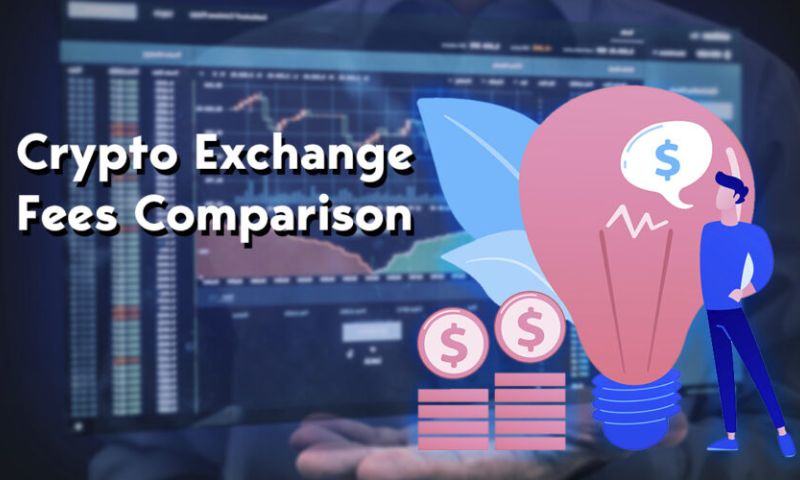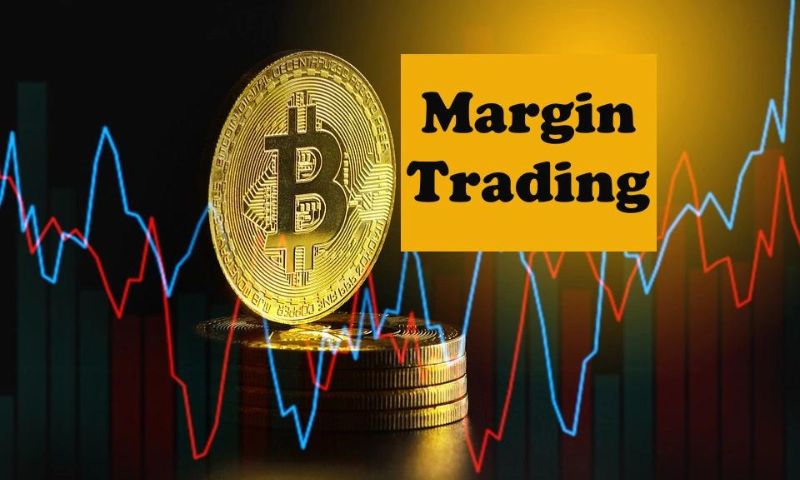Slash your trading costs now by learning to compare crypto exchange fees. I get it, no one likes to see their hard-earned cash chipped away by fees. And in the world of cryptocurrency trading, the difference a low fee can make to your bottom line is huge. Let’s dig into the secret sauce of fee structures, so you can keep more coins in your pocket. From the basics to the nitty-gritty, I’ll guide you through a jungle of costs that can make or break your trading game. Ready to boost your trading strategy and save money? Let’s dive in.
Understanding Crypto Exchange Fee Structures
Demystifying Maker-Taker and Spot Trading Fees
When trading crypto, every penny counts. Maker-taker fees can eat your cash. Simply put, ‘makers’ add orders to the market. They ‘make’ the market. ‘Takers’ match these orders. They ‘take’ them from the order book. Often, makers pay less. They reward patience with lower fees. Takers seek quick trades, so they may pay more. This encourages a filled order book on exchanges.
Spot trading means buying or selling crypto for immediate delivery. Spot trading fees apply to these rapid trades. They differ by platform. Knowledge can save you money. Look for exchanges that favor your trading style. ‘Maker’ or ‘taker’, the best fit for you is out there.
The Variability of Crypto Withdrawal Charges and Deposit Costs
Withdrawal charges can shock you. Deposit costs too. These are fees for moving your coins in or out of an exchange. These costs vary wildly across platforms. Some take a big slice for withdrawals. Others offer them free! It’s tricky to find the best deal. But the effort can save you lots.
No one enjoys surprise fees. Check the fine print. Many exchanges hide fees deep in their service terms. Don’t let them trip you up. Before trading, research is key. It prevents costly mistakes.
Knowing your fees is powerful. It makes the difference between profit and loss. Zero commission crypto trading sounds great, right? But if hidden fees lurk, it’s no bargain. Scout out the best low fee crypto exchanges. Don’t trust ads. Verify their fee schedule yourself.
Knowledge is your weapon in the quest for low-cost trading. Use it well, and you’ll hold on to more of your hard-earned crypto gains.
Navigating the Best Low Fee Crypto Exchanges
Identifying Platforms with the Lowest Crypto Transaction Fees
Let’s dive right into the world of crypto trading costs. Picking the right platform can save you a lot of cash. The trick is to find exchanges with the lowest crypto transaction fees. And, yes, they’re out there!
Here’s the lowdown on finding those platforms. Start by looking at fee schedules. Each exchange has one, and it tells you what they’ll charge for trades. Some exchanges use a maker-taker fee model. This means if you make the market, your fee can be lower.
Next, don’t forget about withdrawal charges. They can sneak up on you. Always check the fee structure before cashing out your coins. The cost to move your money can vary a lot between exchanges.
Deciphering No-Fee and Zero Commission Crypto Trading Options
“No fee” sounds awesome, right? Some places do offer zero commission crypto trading. But here’s the scoop: always read the fine print. Some exchanges boast no fees on trades but get you elsewhere. Maybe they have high withdrawal charges or charge more for larger trades.
Think about what you’ll do most. Will you trade a lot or move your money often? Your answer can guide you to the best low fee crypto exchanges for your needs. Some platforms might offer free trades but have a higher fee for withdrawals. And some might offer discounts if you hold their exchange coin.
By understanding exchange fees, you ensure you’re not losing your hard-earned money to hidden costs. Spot trading fees should also be on your radar. They vary from one exchange to another and can add up during active trading.
So, to wrap it up, don’t pay more than you need to. Compare fee structures and spot the best deals. Seek out exchanges that keep costs down, so you get to keep more of your profits. Happy trading!
The True Cost of Trading Bitcoin and Ethereum
Breaking Down Bitcoin Exchange Fees and Ethereum Trading Costs
When you trade Bitcoin or Ethereum, know this: fees matter. They can eat up your funds if you’re not careful. Each trade can have several types of fees. Mostly, we’ve got maker-taker fees and spot trading charges. Maker fees reward those who add orders to the market. Taker fees charge those who match existing ones. Then, there are withdrawal fees when you take out cash or coins.
Let’s talk numbers. For Bitcoin exchange fees and Ethereum trading fees, you’ll see a range. Often, they hover from 0.1% to 0.25% per trade. Yet, some go lower, others shoot up. It depends on how much you trade and which platform you pick. On top of that, sending your coins to another wallet? That’ll cost you, too, known as the crypto withdrawal charges. Watch for flat fees and percentage-based charges. Each platform has its mix.
Now, the fun part – there are ways to pay less. Crypto platforms offer discounts for heavy traders. Or, they might slash fees for holding their token. Always check their fee schedule for digital currency before you dive in.
Utilizing Exchange Fee Calculators for Cost-Effective Trading
Nobody likes surprises on their bill. That’s why exchange fee calculators are your best friends in crypto. They tell you up front what you’ll pay for your trades. Just type in the trade size, and bam – you get your cost. Using these tools helps you spot the best low fee crypto exchanges out there. It makes crypto exchange fee comparison a breeze.
Zero commission crypto trading? Yes, it’s out there. But read the fine print. Sometimes, “zero fee” isn’t totally true. Other costs might pop up, like wider price spreads. Always hunt for hidden fees in crypto trading. They lurk in withdrawal limits or high fiat to crypto fees for bringing in money from your bank.
In the end, when trading Bitcoin or Ethereum, get smart about fees. Use those calculators. Find the lowest crypto transaction fees. And keep an eye out for sneaky charges. With a bit of homework, you’ll save big and trade smart. And who doesn’t like keeping more coins in their pocket?
Analyzing Fee Differences: DEX vs CEX
Comparing Decentralized Exchange Fees vs Centralized Platforms
Hey there, fellow traders! Let’s dive into the wallet world of crypto exchange fees. Ever wonder why fees on different platforms feel like a crazy maze? They can be. Fees keep changing, and each exchange has its own rules. Two big players in this game are DEXs and CEXs.
A DEX, or Decentralized Exchange, often has lower fees. No middlemen means costs cut down. Plus, you hold your own keys. More control for you! But, trades might take longer, and used tech can be tricky for some.
CEXs, or Centralized Exchanges, give more services but might charge more. They’re speedy and user-friendly, great for newbies. Security’s tight, but remember, you don’t hold your keys. Think about that for your crypto safety!
Fees vary a lot by volume, too. Trading more can sometimes mean paying less per trade. That’s pretty neat for folks trading big.
Evaluating Exchange Fees and Limits: Hidden Costs in Crypto Trading
Okay, we need to talk about hidden fees. They’re sneaky. You think you’re paying one price, then bam! Extra charges. Watch out for withdrawal charges. They’re the sneakiest. Sometimes they look small but they add up fast.
Deposits can have fees too, even if they’re not loud about it. Before you trade, search for any deposit costs. Knowledge saves money! Also, be smart about limits. Low fees are cool, but if you can’t move much crypto, is it worth it?
The truth about fiat to crypto fees is they’re often higher. Why? Because adding money from your bank can be a hassle for exchanges. They’ve got to work with real-world money and that’s more work for them.
Remember, cheap is great, but not if service is lousy. Slow trades or bad tech can cost more than fees. Find the balance.
In crypto land, we always aim for cost-effective trades. So, check out fee schedules for your chosen currency. For Bitcoin exchange fees or Ethereum trading fees, do your homework. Don’t let hidden fees eat your crypto.
Keep eyes peeled for different fee types. Maker-taker fees can confuse, but it’s simple: making a new trade order or taking one that exists. Different fees for each one. Spot trading fees? They’re for trades happening right now, at current prices.
Flat vs tiered fees can twist your brain. Flat means everyone pays the same. Tiered? Like a ladder. More you trade, less you pay. Nice!
Discounted fees might be there for busy traders or those who have exchange tokens. Always find out if that’s you.
To sum it up, check out the fee structure of crypto platforms. Compare CEX and DEX fees with your trading style. Know all the costs, not just the trading ones. Happy, cost-effective trading is the goal.
Crypto’s exciting, but don’t let fees get you down. Smart trading means understanding fees and staying ahead. Be careful out there, and get the best bang for your crypto buck!
In this post, we peeled back the layers of crypto exchange fees. We explored how maker-taker models and spot trading fees work. We also looked at why withdrawal and deposit costs vary between cryptos. Then, we dove into finding exchanges that won’t break the bank, highlighting no-fee trading spots. We broke down what it costs to trade big names like Bitcoin and Ethereum and how using fee calculators helps us save money. Plus, we compared decentralized and centralized exchanges to show how fees can differ a lot.
Now for my final say on the topic. Knowing fees is key to smart trading. Always look into the fee details before you start. It helps you keep more coins in your pocket. Happy trading!
Q&A :
How do you compare fees between different cryptocurrency exchanges?
When looking to compare fees between various cryptocurrency exchanges, you should consider not only the trading fees but also deposit and withdrawal fees, as these can vary widely. Many exchanges provide a fee schedule on their website outlining their fee structure. It’s also advisable to look out for volume-based discounts, maker-taker fee models, and fees associated with different payment methods or cryptocurrencies.
What are some of the lowest fee crypto exchanges available?
While fees can fluctuate and vary depending on your trading volume or method of payment, some cryptocurrency exchanges are known for offering lower fees in the industry. Make sure to research and compare current fee structures as exchanges like Binance, Kraken, and Bitstamp often offer competitive rates.
Are there hidden fees involved in crypto exchanges?
Hidden fees can occur in several forms such as inactivity fees, withdrawal fees, or fees embedded within a wider spread in price on the exchange’s trading platform. It’s important to read the fine print and fully understand the fee schedule before trading on any cryptocurrency exchange.
Can comparing exchange fees impact my cryptocurrency investment returns?
Yes, comparing exchange fees can significantly impact your returns, especially if you are a frequent trader. High fees can eat into your profits, and over time, even small differences can add up. Therefore, it’s crucial to include fee comparison in your overall strategy for trading or investing in cryptocurrencies.
How do exchange fees differ for high-volume traders vs. casual investors?
Many exchanges offer tiered fee structures where high-volume traders enjoy lower fees due to their larger trading volume. Casual investors might face higher fees per transaction. It’s vital to check if an exchange offers tiered fees and whether your trading volume qualifies you for discounted rates.






